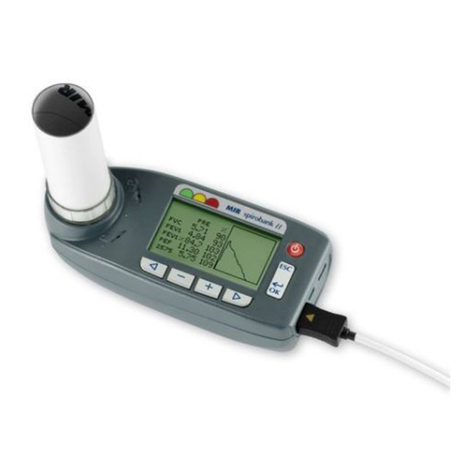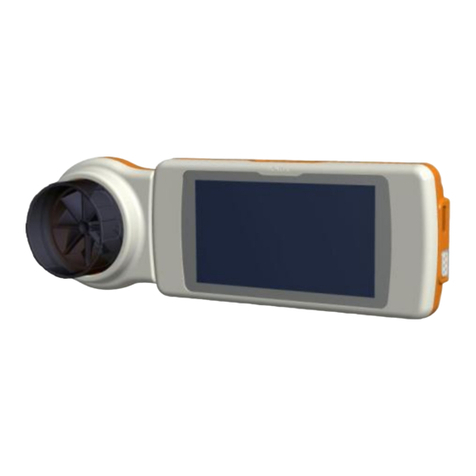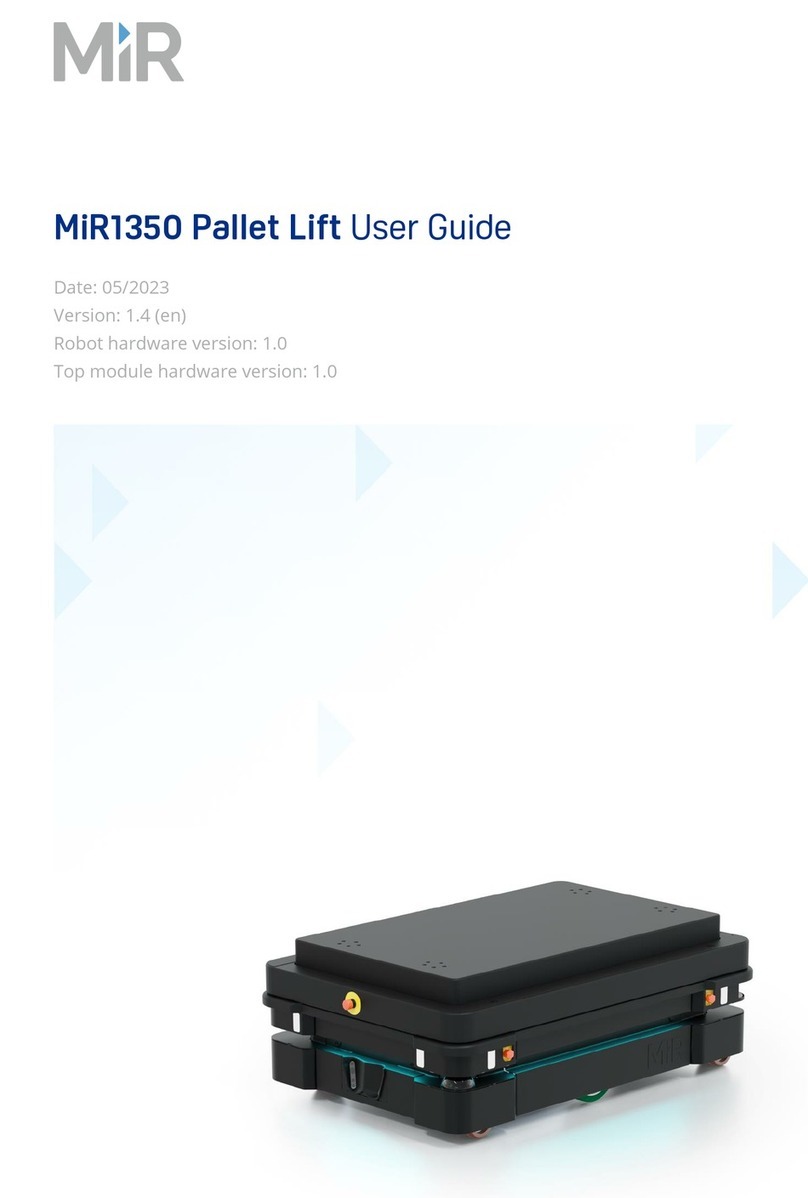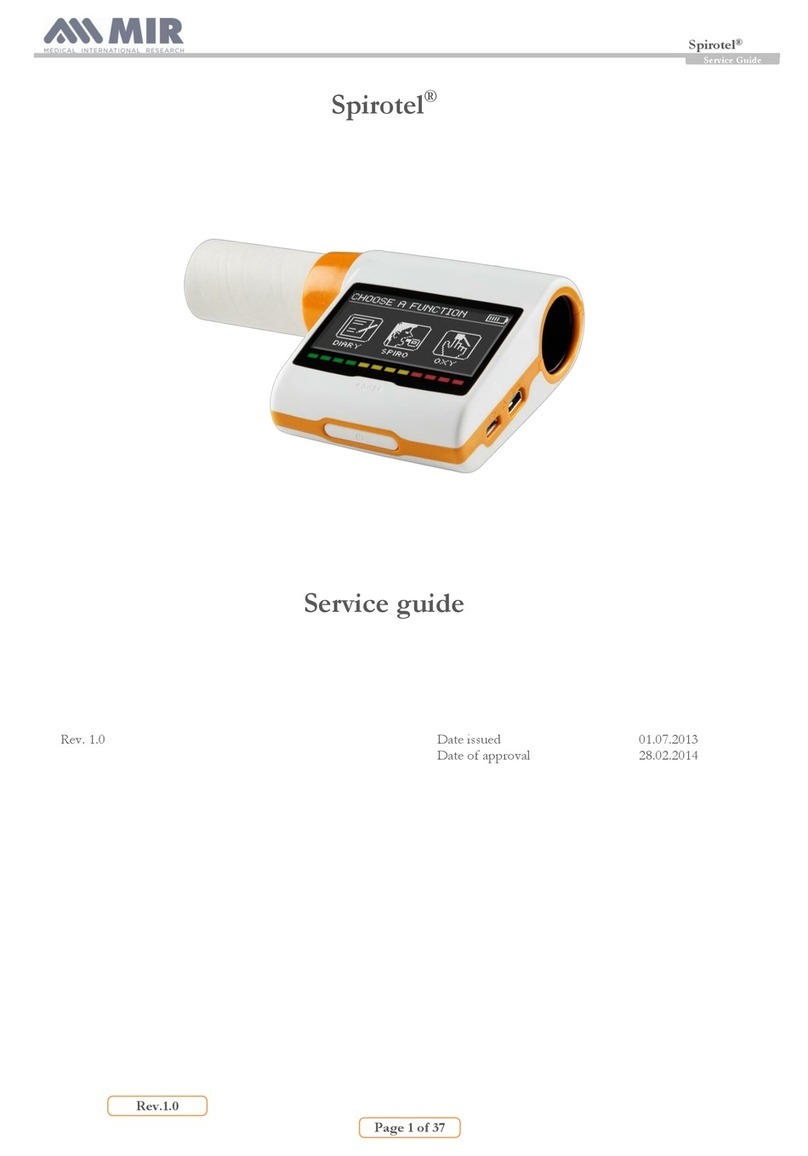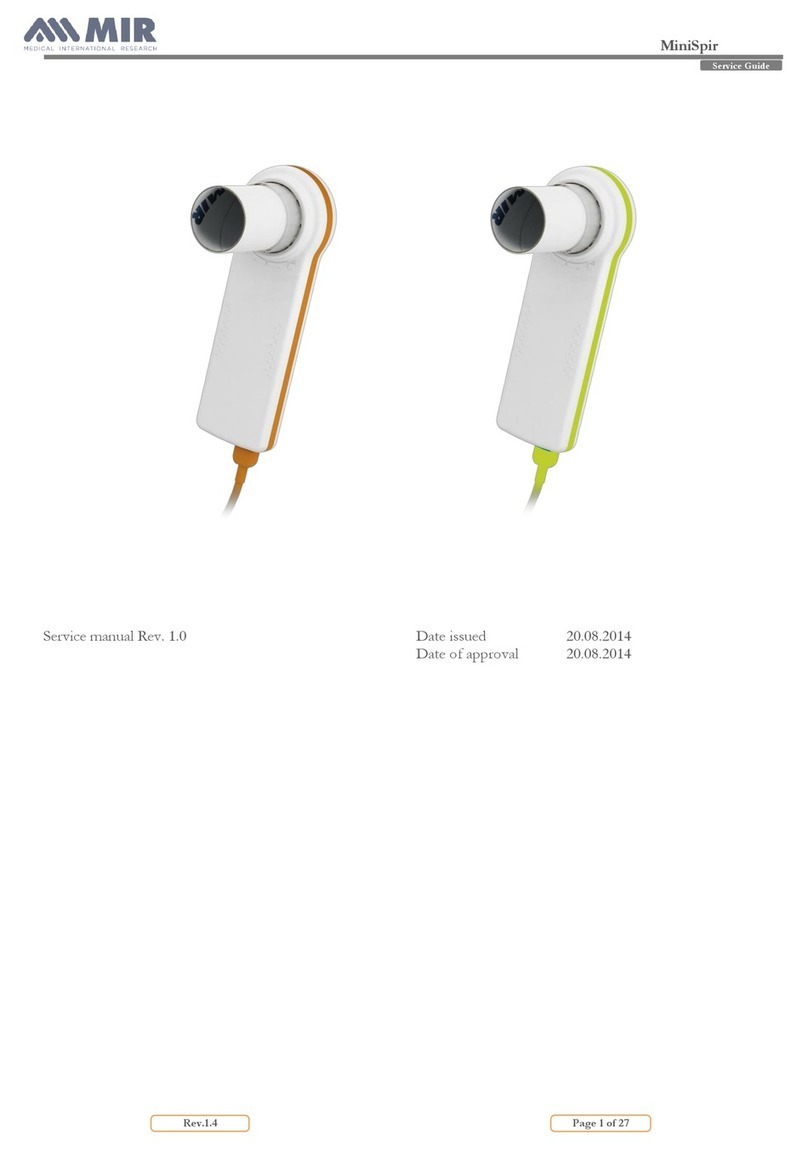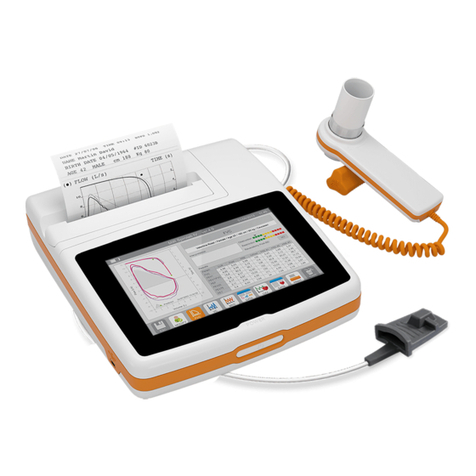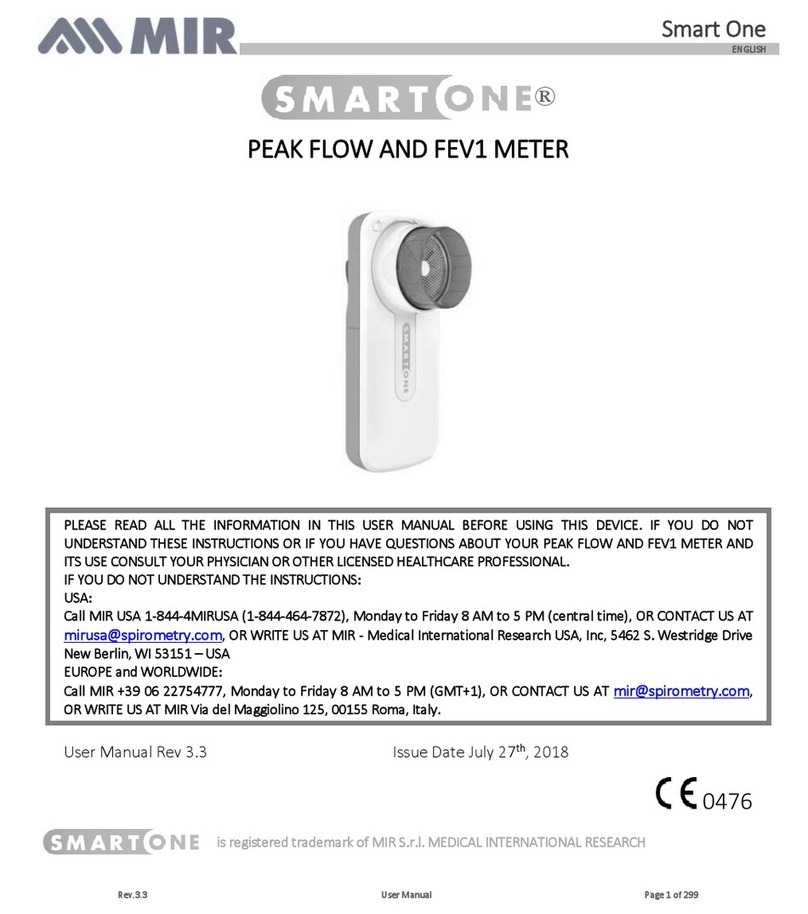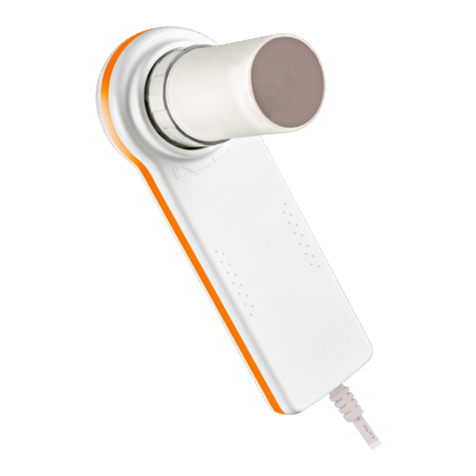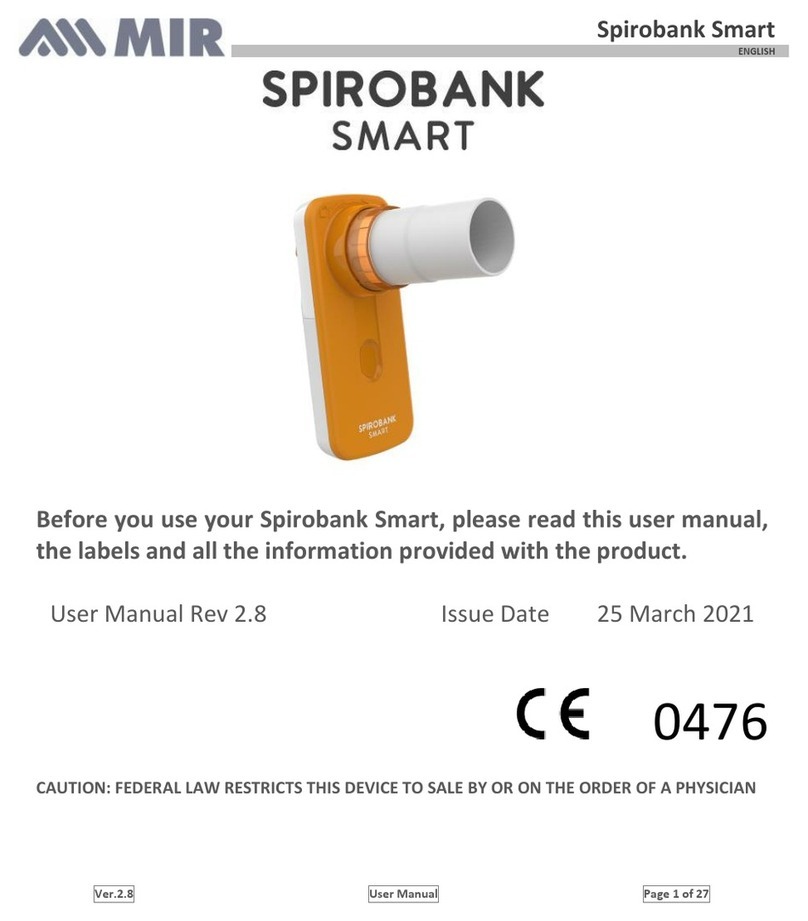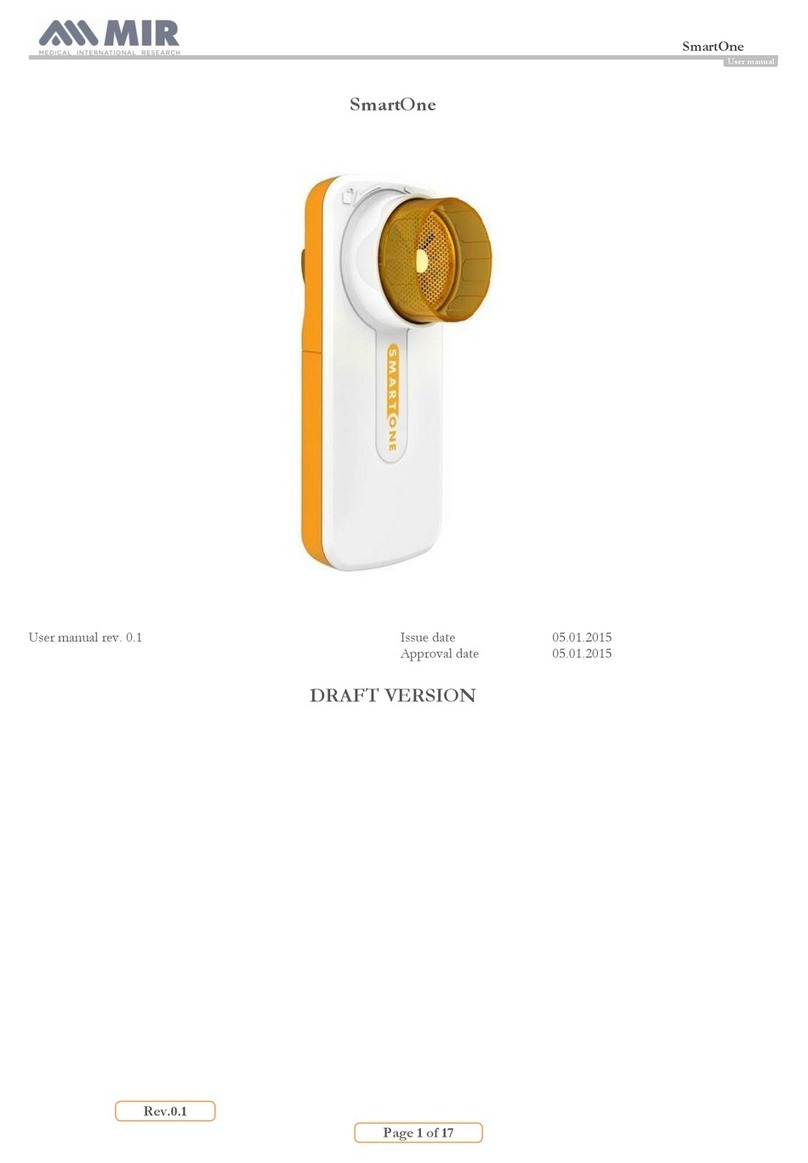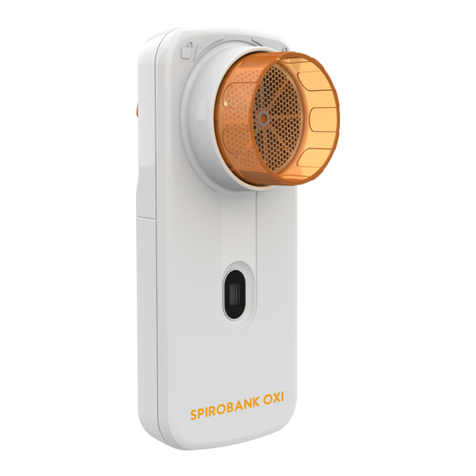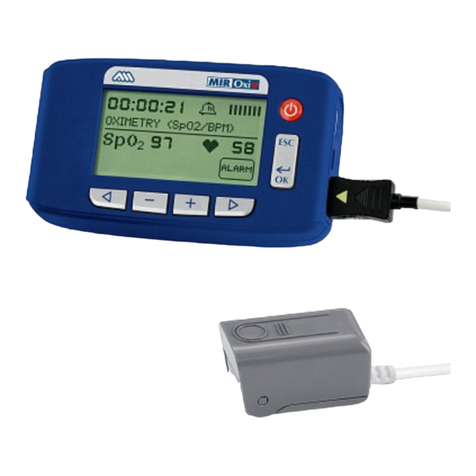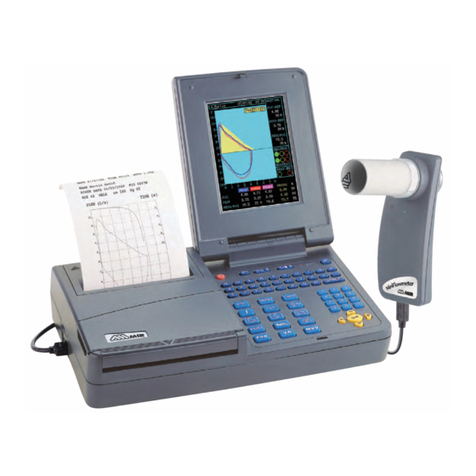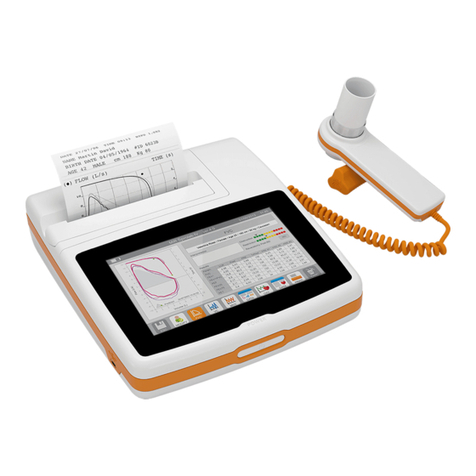TABLE OF CONTENTS
1. INTRODUCTION ..................................................................................................................................................................................................4
1.1 Intended use...................................................................................................................................................................................................4
1.1.1 User type....................................................................................................................................................................................................4
1.1.2 Ability and experience required .............................................................................................................................................................4
1.1.3 Where the device is used.........................................................................................................................................................................4
1.1.4 Use at home ..............................................................................................................................................................................................4
1.1.5 Individual patient factors that can affect use of the product ...........................................................................................................4
1.1.6 Limitations of use –Contraindications ................................................................................................................................................4
1.2 Important safety warnings ...........................................................................................................................................................................5
1.2.1 Risk of cross contamination...................................................................................................................................................................5
1.2.2 Turbine.......................................................................................................................................................................................................5
1.2.3 Mouthpiece................................................................................................................................................................................................6
1.2.4 Sensor for oximetry .................................................................................................................................................................................6
1.2.5 USB connection cable .............................................................................................................................................................................7
1.2.6 The Spirotel®unit ....................................................................................................................................................................................7
1.2.7 Warnings for use in electromagnetic environments ..........................................................................................................................7
1.3 Warnings regarding use of the lithium ion battery..................................................................................................................................7
1.4 Warnings regarding the GSM module.......................................................................................................................................................9
1.5 Labels and symbols .......................................................................................................................................................................................9
1.5.1 ID label ......................................................................................................................................................................................................9
1.5.2 FCC certification label...........................................................................................................................................................................10
1.5.3 Electrostatic discharge symbol ............................................................................................................................................................10
1.6 Product description.....................................................................................................................................................................................11
1.7 Technical specifications .............................................................................................................................................................................11
1.7.1 Spirometer specifications......................................................................................................................................................................12
1.7.2 Oximeter specifications.........................................................................................................................................................................12
1.7.3 Oximetry alarms description ................................................................................................................................................................13
1.7.4 Other features.........................................................................................................................................................................................14
2. USING THE Spirotel®..........................................................................................................................................................................................15
2.1 Display...........................................................................................................................................................................................................15
2.2 Turning the Spirotel®ON and OFF .......................................................................................................................................................16
2.3 Saving energy ...............................................................................................................................................................................................16
2.4 Main screen ..................................................................................................................................................................................................16
2.5 Symbols and icons.......................................................................................................................................................................................16
2.6 Service menu................................................................................................................................................................................................17
2.6.1 Configuration menu...............................................................................................................................................................................19
2.6.2 Turbine calibration.................................................................................................................................................................................25
2.7 Showing the current patient's last session...............................................................................................................................................27
2.8 On-line mode (connected to a PC)..........................................................................................................................................................27
2.9 Performing spirometry ...............................................................................................................................................................................27
2.9.1 FVC test...................................................................................................................................................................................................27
2.10 The display and reading of spirometry results .......................................................................................................................................28
2.10.1 Interpreting spirometry results ............................................................................................................................................................28
2.11 Performing oximetry...................................................................................................................................................................................28
2.11.1 Oximetry test classification ..................................................................................................................................................................30
2.11.2 Instructions for using the sensor on adult patients..........................................................................................................................31
3. DATA TRANSMISSION.....................................................................................................................................................................................32
3.1 Data transmission via Bluetooth to a mobile phone ............................................................................................................................32
3.2 Connecting with a PC via USB port ........................................................................................................................................................32
3.2.1 Up-dating internal software..................................................................................................................................................................32
3.2.2 Configuration for data transfer via GSM...........................................................................................................................................32
3.3 Data transfer via GSM ...............................................................................................................................................................................33
3.3.1 Errors that might occur during the GSM connection .....................................................................................................................33
4. MAINTENANCE..................................................................................................................................................................................................34
4.1 Cleaning and disinfection of the turbines ...............................................................................................................................................34
4.2 Cleaning and disinfection of the oximetry sensor .................................................................................................................................35
4.3 Cleaning of the device ................................................................................................................................................................................35
4.4 Recharging the battery................................................................................................................................................................................35
5. TROUBLE SHOOTING AND SOLUTIONS ...............................................................................................................................................36
Guarantee conditions......................................................................................................................................................................................................37






